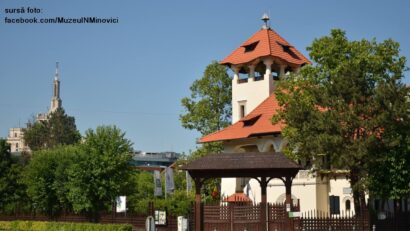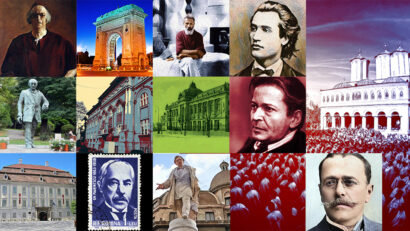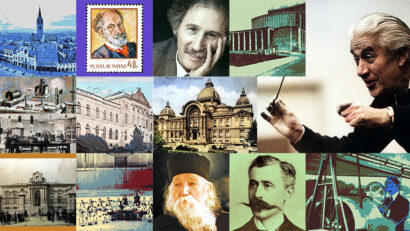The day of May 10th, a landmark in Romania’s modern history
The kings of Romania and the personality cult

Christine Leșcu, 16.05.2020, 13:00
The day of May 10th was marked
and celebrated as the national day of Romania until 1948. It was a symbol of
Romania’s independence and unity. Also, the day was inseparably connected to the
monarchy, providing a fine opportunity for public celebration.
The story of the day of May 10th began in 1866, when Carol of Hohenzollern-Sigmaringen
arrived on the territory of the then Romanian Principalities of Wallachia and
Moldavia. Shortly after his arrival, Carol became the new ruling prince of the Romanian
principalities, in the wake of the coup that forced ruler Alexandru Ioan Cuza
to abdicate. All that happened at a time when the diplomatic context was a very
sensitive one; we recall that, at European level, the union of the Romanian
Principalities had been recognised only during Alexandru Ioan Cuza’s reign. The
Ottoman Empire was, at that time, the suzerain power of the Romanian
Principalities. Consequently, in February 1866, the Ottoman Empire called for a
decision to be taken by the European powers to rescind the union. What happened
afterwards?
Historian Alin Ciupala:
At that time,
the ruling political class had to be quick in finding a solution to overcome
the crisis. So Ion Bratianu and other high-ranking politicians who belonged to
the generation of the 1848 revolution traveled to Paris, since such a solution
could only be provided by Europe’s strongest man at that time, the Emperor of
France. So Napoleon the 3rd suggested this solution, which turned out to be a
very good one, longer term. Strictly speaking, the significance of the day of
May the 10th, 1866, was not marked in a festive manner. Apart from the ceremony
staged on that occasion, so serious was the political crisis, that all energies
were directed towards it. Carol I did arrive in the country, but that was not
enough. He had to enjoy recognition by the suzerain power, since at that time
the Romanian Principalities had still been under Ottoman suzerainty. So people
did not make much of the day of May 10th, in terms of public celebration.
Events took a totally different
turn 15 years later, when Romania, having gained its independence in the wake
of the Russian-Turkish war of 1877-1878, was officially proclaimed a kingdom.
Carol I was crowned as its king on May 10th, 1881.
Alin Ciupala:
From that moment
onward, the day of May 10th would gain
a totally different scope. A set formula would even be devised, to mark the
moment. The day of May 10th proper was
teeming with all sorts of celebratory events. It began with the mass held at
the Patriarchal Cathedral, with members of the Royal House and members of the
government attending, joined by representatives of foreign diplomatic missions
to Bucharest. The momentum of the day was provided by a public pageantry, the
most important manifestation of the shared joy as the Royal family and
Romania’s citizens stood together for the military parade, led by King Carol I.
As soon as the military parade was over, a festivity followed, held at the
Promenade, which can quite aptly be described as a popular one. The day closed
with a ball offered by the Royal family at the Palace, where the rank and
fashion and members of the government were invited, as well as members of the Parliament
or members of the foreign diplomatic missions to Bucharest. So given what it’s
taken, it was an eventful, very well-organised day.
The ritual instated by Carol I to
mark the importance of May 10th was continued by his successor, King Ferdinand, all the more so as the day became
even more important, after World War One and the Great Union of 1918.
Alin Ciupala:
It stood for the
moment of reunification, for all Romanians. In Bucharest, after 1918, the
territories would be officially represented, that were united with the Old
Kingdom of Romania after World War One. Furthermore, Queen Mary, in the
inter-war years and up until the 1930s, played a crucial role in staging
festivities on May 10th. As for her public presence, which was highly popular
among Romanians, it emphasised the fact that it was an out-and-out public
festivity. But the one who turned the event of May 10 into an opportunity to
speak more about his personality, rather transforming into into an opportunity
to aggrandise the sovereign, it was King Carol II. During his reign, he
was very keen on shaping up a certain form of personality cult. As for the day of
May 10th, it provided a fine opportunity to achieve that, an opportunity he did
not miss. Proof of that is aplenty, including cinema productions. Newsreels of
that time have been preserved to this day, capturing the May 10th festivities
in the time of King Carol II. Actually, it is well worth mentioning that the
first cinema newsreel that was edited marked the May 10th festivities of 1914.
Unfortunately, it was not kept in mint condition.
Romania’s entering World War Two did
not favour the May 10th festive celebrations any longer, and that’s for sure.
In 1947, King Michael was forced to abdicate. Communism was fully instated in
the country, and another day was picked for the national celebration. Moreover,
the communists were very particular about deleting mentions of May the 10th
from the mainstream historical sources of information. The day was inseparably
linked to monarchy…So blatant was the communists’ historical counterfeit that
even the day when the independence of Romania was proclaimed, on May 10th,
1877, was celebrated on May 9th, during the communist regime.
(Translation by Eugen Nasta).






























